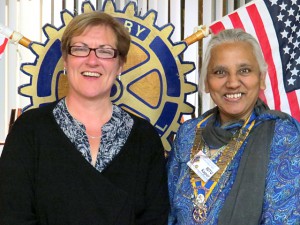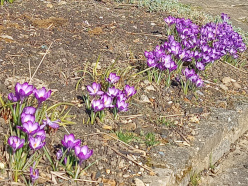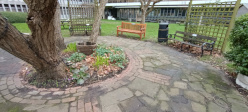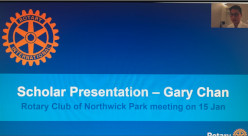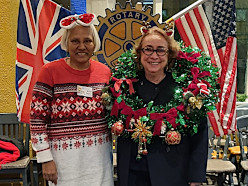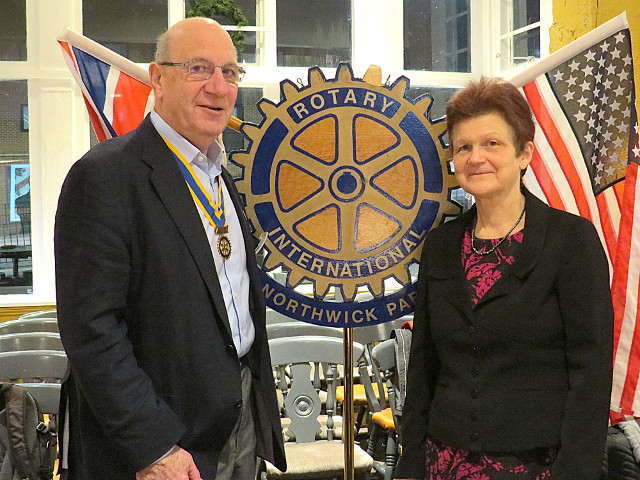
Our speaker on Wednesday 09 January 2019 was Eileen Samuroff from the Harrow Bee Keepers Association – and yes, all the bee puns were done!
Before Eileen spoke, we learned of two members celebrating their 55th wedding anniversary, we formed a District Quiz Team for 16 January 2019 and a Ten-Pin Bowling Team for the event coming soon.
Eileen started with the different types of bee: there is the honey bee, the bumblebee (about 25 species) and the solitary bee (about 250 species). Only the honey bee provides honey in a way that can be harvested by humans. Bees are essential to agriculture with about 1/3 of our food crops relying on bees for pollination. The honey is ‘manufactured’ in hives from nectar and pollen. In nature, the honey is used by the bees as a winter food, and beekeepers have the task of replacing the food if they take the honey, otherwise the colony of bees would starve and collapse.
There are typically about 50,000 bees in a hive during summer. That number can fall to 10,000 at the end of winter. Male bees – a different meaning of the word ‘drone’ – are in the hive to mate with the queen and then die. Female bees – the worker bees – start with housekeeping in the hive, then they do guard duty, and finally they get to fly and gather nectar and pollen as foragers for up to three weeks. One of the females becomes the queen and has the job of laying eggs in the hive to replace the bees that die. With the female bees only living for about 5 to 7 weeks, several generations of 50,000 are needed each year, so there is plenty of work to do for the queen and the male bees to sustain the hive. As well as honey, the hive will also yield beeswax.
The talk lead to a large number of questions including techniques on managing the Varroa Mite which has devastated so many hives around the world. Thank you Eileen for a detailed talk enthusiastically delivered. Members of the Club were keen to purchase the pots of honey that were brought to the meeting by Eileen.


